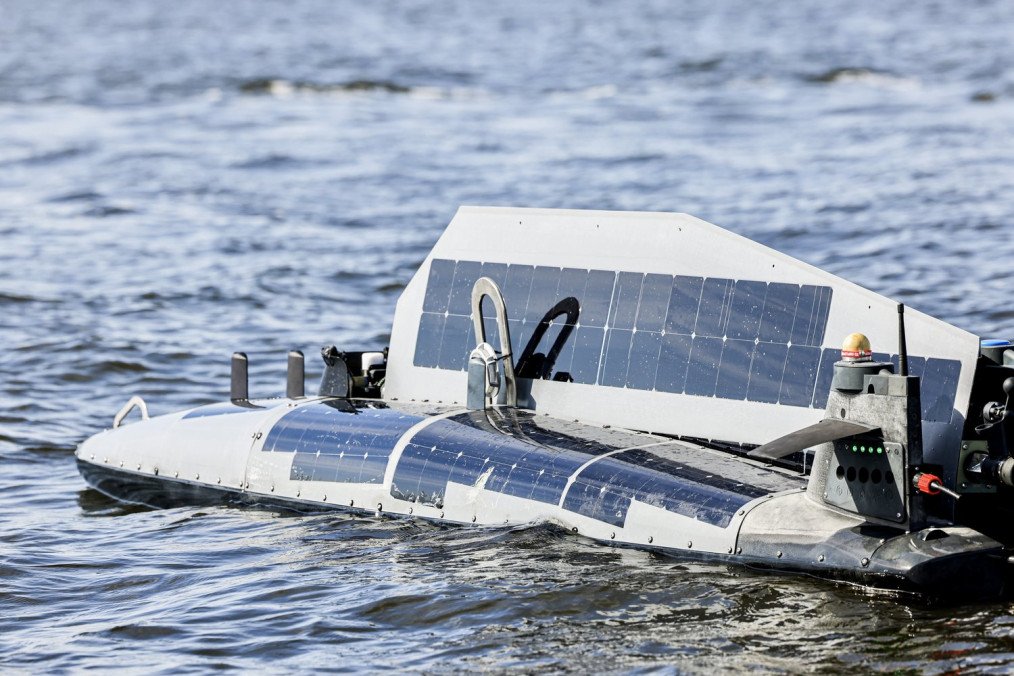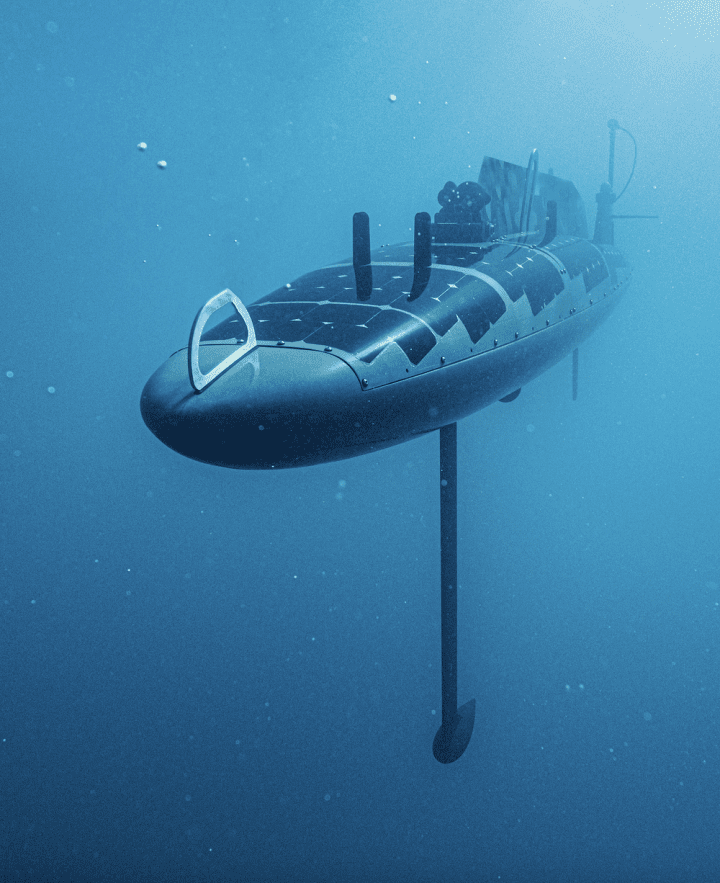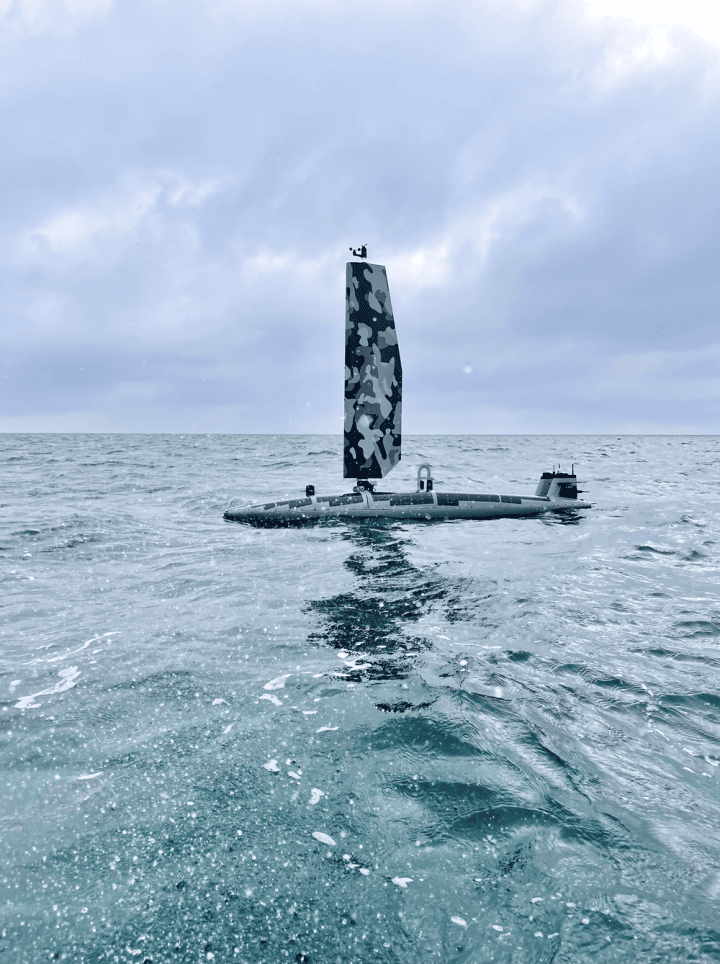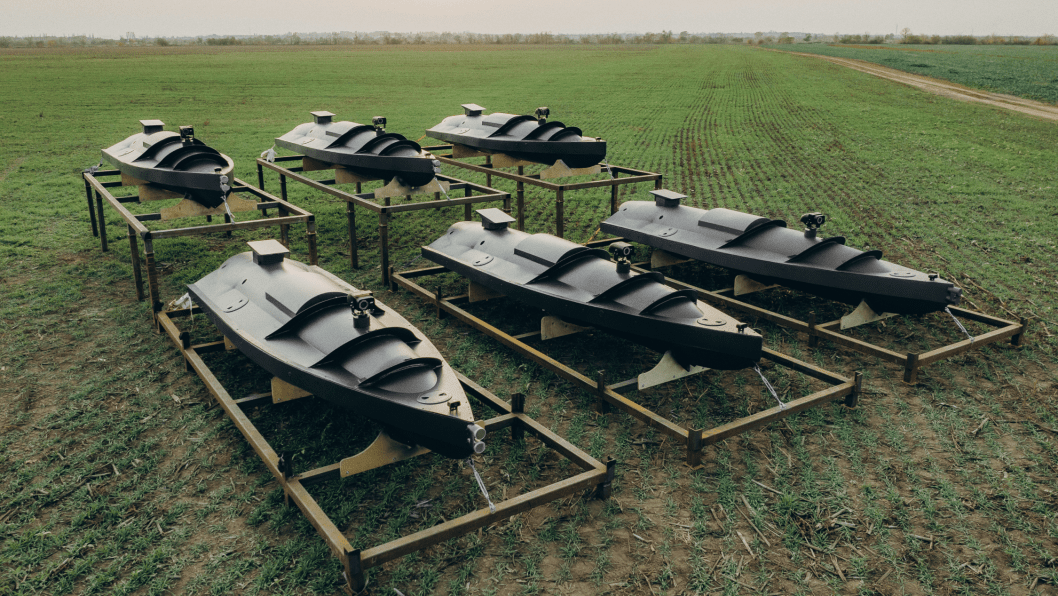- Category
- Latest news
Ukraine’s Sea Drones Inspire US Military as Triton AUSV Charts New Course

As Ukraine continues to advance in the use of unmanned surface vehicles (USVs) in the Black Sea, international focus is turning to technologies that align with the country’s successful asymmetric tactics.
One such platform is the Triton AUSV—a US-developed autonomous drone capable of both surface and subsurface operations.
According to a joint report by Espreso and the Consortium for Defence Information (CDI) on April 6, the Triton AUSV represents a new class of naval drone with operational features that may directly address Ukraine’s maritime defense needs.
Produced by US company Ocean Aero, the Triton is described as the world’s first AUSV—Autonomous Underwater and Surface Vehicle. It can function as an unmanned sail-powered surface vessel, and transition into a submerged mode to complete reconnaissance or surveillance tasks.

As Espreso reports, this dual-functionality allows the Triton to adapt dynamically to mission requirements and environmental conditions.
What sets the Triton apart is its fully renewable energy design. Powered by solar and wind energy, it can operate for over three months on the surface and remain submerged for up to five days before requiring recharge.
This makes it suitable for long-duration, low-visibility operations in contested waters—an operational model Ukraine has been refining in the Black Sea.
According to CDI, the Triton measures 4.4 meters in length, weighs 350 kilograms, and features a sail that doubles as a solar panel. Its cruising speed reaches up to 5 knots on the surface and 2 knots underwater. A low-profile hull—only 1.5 meters deep—minimizes radar and visual detection.

The drone uses autopilot systems, wind propulsion, and GPS for surface navigation, and switches to inertial navigation when submerged. In the event of a radar or visual threat, the Triton can autonomously dive and evade detection. The quiet electric propulsion system makes it difficult to track once underwater.
As highlighted in the Espreso report, the Triton is already in use by the US Navy for operations in the Middle East, where it supports surveillance and monitoring of strategic maritime corridors.
During a joint exercise in February 2023, it worked alongside Saildrone and MARTAC Devil Ray systems to collect and transmit visual data from nearby vessels for real-time analysis using AI-based systems.

The Triton is equipped with infrared cameras offering 360° visibility, weather sensors, and advanced sonar and navigation equipment. Its modular architecture allows for up to 23 kg of additional payload, including surveillance sensors or electronic warfare tools.
While there is no public confirmation of the Triton AUSV being deployed in Ukraine, its capabilities align closely with Ukraine’s operational doctrine in the Black Sea. As noted by Espreso and the CDI, Ukraine has rapidly become a leader in unmanned maritime warfare, fielding advanced naval drones for strike and reconnaissance missions.
Over the past three years, Ukraine has developed a diverse drone fleet capable of targeting ships, helicopters, and ground systems. Notably, in December 2024, a Ukrainian Magura V5 drone shot down two Russian helicopters over the Black Sea using short-range missiles—an example of how these systems have evolved into multi-domain platforms.
Ukraine has also unveiled the Katran drone, equipped with torpedoes, a minigun, and electronic warfare tools. It is designed for long-range autonomous missions, supported by AI-driven targeting and threat recognition.
-4f4595657c2936cbd7988534635071d0.jpg)
In addition, Ukraine now deploys naval drone carriers, used to remotely launch UAVs and FPV drones deep behind enemy lines. These platforms were reportedly involved in the destruction of multiple Russian air defense systems in occupied Kherson in early 2025.
Another recent development is the Toloka underwater drone family, showcased by President Zelenskyy in February 2025. With ranges up to 2,000 kilometers and payloads of up to 5,000 kg, these drones provide a new level of stealth and strike capability below the waterline.
In this context, the Triton AUSV could complement Ukraine’s existing systems with its ability to operate autonomously on and below the surface, use renewable energy, and conduct long-duration missions. Integrated into Ukraine’s growing unmanned fleet, Triton may support surveillance, coastal defense, or covert operations in contested waters.



-72b63a4e0c8c475ad81fe3eed3f63729.jpeg)


